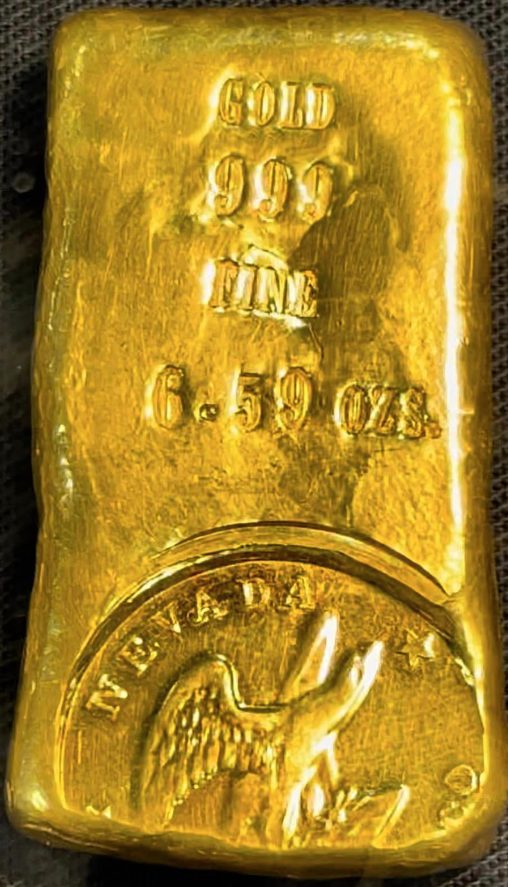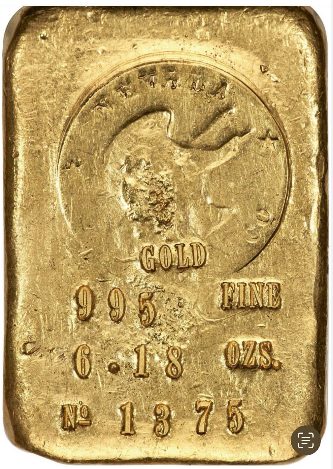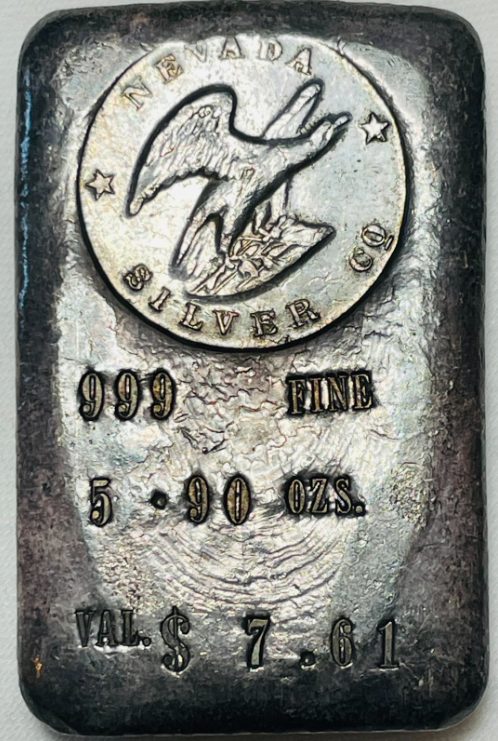The Nevada Silver Co. was incorporated in Nevada on January 18, 1919 by C.E. Crowley, H.K. Linger and Ed Wynn (lawyers and a constable), all directors and officers located and living in Idaho Falls Idaho. Their resident agent in Nevada was W.H. Leonard in Rawhide, Nevada, whose office was listed as in Room 1 of the Post Office building in Rawhide.
Rawhide was an exceptionally active gold camp in west central Nevada that boomed late about 1908-9. After numerous mining company consolidations, the town quickly dropped in size, though the post office remained open until 1941, probably with only a resident or two hanging on until Uncle Sam figured out that the salary they paid the postmaster exceeded his deposits by a long shot. Leonard was credited with finding the Nevada Scheelite deposit in 1930, five miles west of Rawhide. It is difficult to speculate who was behind the Nevada Silver Co. Promotion, but it may have been Leonard backed by the Idaho Falls lawyers, who may have been friends of Leonard`s from earlier rawhide days. The Nevada Silver Co.`s charter was revoked in March, 1932, probably as a result of Leonard`s success at Nevada Scheelite. The Rawhide townsite is gone today, part of a huge open pit gold mine run by Kennecott. [Ref: HK`s Fall 2006 ingot catalog, page 66]
While there are approximately 100 silver ingots known, there are only two known Nevada Silver Co gold ingots, both of which have (re)surfaced in the past 2 years.
Both of them also have unique characteristics with respect to the stamp which address the “silver” in the name despite being a gold ingot.
Both of them are specimens from the Franklin Hoard lore, facilitated through John J. Ford Jr.
The first gold ingot measures approximately 2 inches by 1-1/4 inches and weighs 204.9 grams. Inscriptions on the ingot include “Nevada Silver Company,” “GOLD, “999,” “FINE,” and “6.59 ozs.”
Within the Franklin Hoard, the ingot is listed as plate 15 on page 191 in Karl Moulton’s publication John J. Ford, Jr. and the “Franklin Hoard” are examples of the Eagle Mining Company pieces also attributed to the Franklin Hoard.
This Nevada Silver Company Franklin Hoard piece is an undiscovered gold piece of equivalence to the gold Eagle Mining Company specimens. The estimated production date of the Gold Nevada Silver Company specimen is estimated as 1955 to 1958, with the intention of appearing to have been produced in the 1870 to 1890 range. On page 261 of Moulton’s book are notes written by Eric P. Newman from when he visited Kenyon Painter at his home in Phoenix in July 1968. It shows sketches of the Nevada Silver Company Die workup and records that show the origins and also that the Nevada Silver Company die was contracted through Harry J. Forman, a longtime Philadelphia coin dealer whom for many years was Madison Mint (of Silver Art Bar Collectable fame).
Forman also was an author and American Numismatic Association (ANA) life member who died in March 2008. Together with partner Ruth Bauer, he ran the firm of Forman and Bauer, Inc., a respected mail-order coin business. Forman was active in increasing ANA membership and encouraging donations to the Money Museum, and became the ANA’s first “grand patron” in 1982. He received the ANA’s Glenn Smedley Memorial Award in 1998, the Numismatist of the Year Award in 2000, and the ANA’s highest honor, the Farran Zerbe Memorial Award, in 2001. The ANA dealer of the year is now named the Harry J. Forman Dealer of the Year Award.
Forman was known to have used various tooling and machining companies to do his die work and striking for Madison Mint pieces. It seemed Forman had most likely contacted the Philadelphia firm of August C. Frank Company to engrave the Nevada Silver Company dies, according to Moulton’s research.
6.59 oz Nevada Silver Co Gold Ingot

[05/2023] https://auctions.vegascoindealer.com/Nevada-Silver-Company-Gold-Specimen-Piece-from-The-Franklin-Hoard_i48473040 ($49,200)
6.18 oz Nevada Silver Co Gold Ingot, No 1375
Another gold ingot briefly surfaced at Heritage Auctions but was quickly taken away. We can only hazard a guess as to why the ingot never went up for auction but that will remain as an exercise to the reader.
Fortunately we were able to capture a picture of the ingot prior to it being taken down.

What is unique about this piece compared to the previous gold one is that instead of masking the word ‘silver’ in the stamp by keeping it off the edge, this one made a lighter impression towards the area where the ‘silver’ part of the stamp would be present, and replaced that with a superimposed stamp of the word ‘GOLD’ in all caps.
Link: No reference available. Never officially sold at auction.
Different varieties of silver ingots exist, but for the most part they share the same stamp with the Eagle. Most do not have serial numbers but the ones with serials are perceived as more desirable. Subtle differences exist between the roughly 100 known silver ingots which we will not get into on this page.

Amongst Ford ingot collectors, these are certainly a mainstay.
